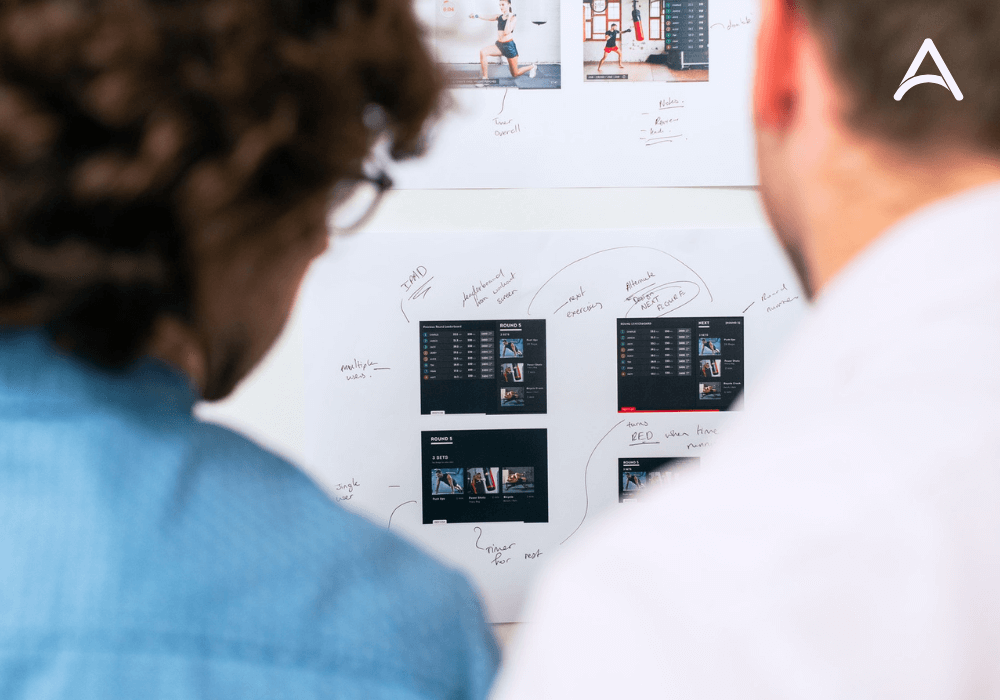The Stages of Mobile App Development

This article is going to go into detail about the stages of mobile app development. It will give you great insight on what to expect and how to be prepared for the process. Hopefully, understanding this process will help you achieve the goal of launching your app.
What are the stages of mobile app development?
The following is a list of the steps we take in a mobile app development process:
- Idea Workshop– Here you will define what you are wanting to create. Cover the goals for what the vision of your app is and what you want it to do.
- Wireframe Delivery– this is the backbone of the project. It will serve as the ground between initial ideas and the end product
- Design & Approval– Create the User Journey Map, design the interfaces, discuss animations, and the general look and feel of your app. Then get approval before creation starts.
- Developing & Testing– Plan, Code, Build, Test, and Repeat.
- Acceptance & Launch– Review the completed and app and prepare it to be launched on the appropriate platforms.
Let’s go deeper into each of these stages so we can have a better understanding of what they each include.
Step 1. Idea Workshop
Before you can begin developing your app, you need to have a clear idea of what it is you wish to create. This isn’t always easy, so it’s best to follow some suggested tasks to get you to that point.
An Idea Workshop will be that initial step in the development process where you can work with the development team to convey your vision and goals for what you want your app to be. The development team will know how to translate your goals into meeting the user’s needs. During this idea workshop phase, you should be prepared to focus on the following topics:
- Reviewing Ideas- What ideas do you have for the app? What will your users think of the app? Can you help them solve a problem with the app?
- Prioritization- Which features are most important to include in the app? Which ones will be the main focus, and which ones are less crucial?
- Identifying Potential Users- Who is your target user? How do you want to help them?
- Planning- What is the scope of the project? How will you measure the end result? How will you communicate with the development team throughout the process?
Of course, this is just a brief overview of what the idea workshop stage would include, but it’s important to come prepared so that you and the development team have a strong foundation to start the project. Ultimately, your goal here is to make sure you are building the app in the way that you see it.
Step 2. Wireframe Delivery
The goal of wireframing is to identify an outline of the content of your app and create a solid foundation for the next steps in the design process. A well-designed wireframe will make the visual and interaction design much easier throughout the process.
The development team will spend time to create and deliver the wireframe for your app. Key things to include in this process are:
- Sketching out the Core Part of the User Flow
- Setting Mobile Frames
- Determine the Order of Information
Keeping these things in mind with assist you and the development team in delivering the wireframe, which will greatly assist in the development of your app. Turning it from an idea, into code.
Step 3. Design & Approval
Next up is the final design of the app. Designers will work to turn your idea into something visual. Setting up the layouts of the User Interface (UI), motions, and giving you mockups to approve.
You’ll likely get some presentations on the design and interface for you to better see the animations and transitions. You will want to be deeply involved in the design stage, after all, it is your product. The team will know this and will communicate often and present results for you to approve.
Once the design is complete and the team has your approval, they will be ready to work on developing your app.
Step 4. Developing & Testing
The developers will begin to write the code and create your app. They likely will be using Scrum to most efficiently develop the app. This means they will be breaking up the development process into smaller milestones and work in cycles. An example of a cycle would include refinement, planning, coding, testing, review, and retrospective.
- Refinement– this is the act of making sure the backlog of tasks is updated, clean, and ordered.
- Planning– usually a meeting at the beginning of the Sprint to discuss what will be done in that week. The team will make sure all the tasks are clear with acceptance criteria and that everyone accepts. You as the product owner should be actively involved in this meeting.
- Coding– the developers will be actively writing the code and working on the app as discussed in the planning meeting.
- Testing– version of the app will be tested by the team and providing crash reports as needed.
- Review– during this time the team will discuss what was done during the Sprint. The team will check the tasks that needed to be completed in the Sprint and should send you a summary after the review.
- Retrospective– this meeting is for you and the team to discuss ways to improve the quality of the process during the Sprint. You can create a plan for implementing the improvements as well.
As stated, this is an example of the development process using Scrum and Sprints. It is an effective way to manage the development of the app and keep you involved throughout the process.
Step 5. Acceptance & Launch
Once the first version of your app is ready, it will be time to publish it. This means that the app has met your approval and is ready to be launched. The team should then help you with uploading it to the Google Play Store and/ or the Apple Store. It will then be released to the world and your users can start downloading it!
The Stages of Mobile App Development – Summary
After reviewing this, we hope you have a good understanding of the development stages of a mobile app. From the idea workshop to the wireframe delivery, to the design and development, and finally to the launch of your app. You should be involved in these steps and stay engaged with the development team you are trusting to turn your idea into a successful app.




